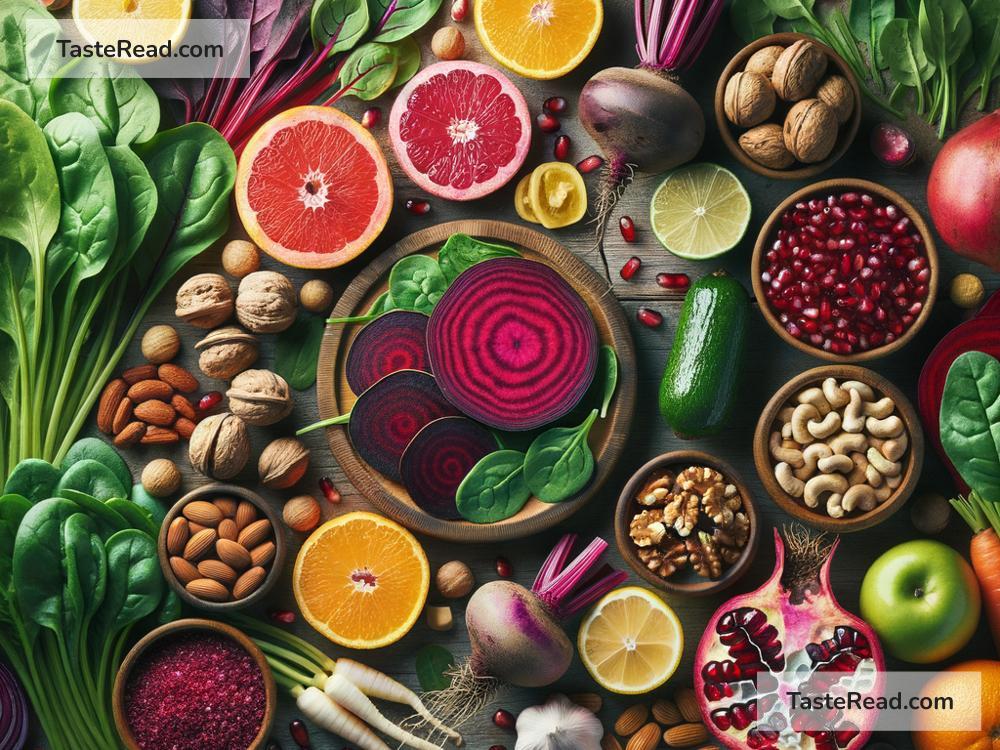Foods That Enhance Nitric Oxide Production: Boosting Your Health Naturally
Nitric oxide (NO) may sound complicated, but it’s actually a simple and essential molecule that your body produces naturally. It plays a key role in keeping your blood vessels healthy, supporting cardiovascular health, and improving circulation. Nitric oxide helps your blood vessels relax and expand, making it easier for blood, oxygen, and nutrients to reach your cells. But did you know you can boost your body’s nitric oxide production just by eating the right foods? In this blog, we’ll explore some delicious, everyday foods that help enhance nitric oxide production in your body.
What Is Nitric Oxide, and Why Is It Important?
Nitric oxide is a gas molecule produced by the cells lining your blood vessels. When your body makes enough nitric oxide, your blood vessels stay elastic, which promotes healthy blood pressure, good circulation, and optimal heart function. Higher nitric oxide levels can even contribute to increased energy levels and better exercise performance.
Unfortunately, aging, stress, and unhealthy lifestyle habits can reduce nitric oxide production, which may lead to reduced vascular health and other health issues. Fortunately, eating the right foods can help your body produce more nitric oxide naturally. Let’s dive into the best foods for the job!
1. Leafy Greens: Spinach, Kale, and Arugula
Leafy greens are perhaps the best-known foods for boosting nitric oxide because they are rich in nitrates. Nitrates are natural compounds that your body can convert into nitric oxide. Spinach, kale, arugula, and Swiss chard are all top choices.
Here’s how it works: Once you consume foods high in nitrates, your body converts them into nitrites through bacteria in the mouth. These nitrites are then further converted into nitric oxide in your blood. So, eating a fresh spinach salad or blending kale into a green smoothie is a smart way to support your nitric oxide levels.
2. Beets: A Nitric Oxide Powerhouse
Beets are another nitrate-rich food that can supercharge nitric oxide production. They’re particularly popular among athletes because nitric oxide helps improve blood flow, which can enhance endurance and performance during workouts.
Drinking beet juice or roasting beets is a great way to enjoy their health benefits. If you’re not a fan of the earthy taste, try blending beets with other fruits and vegetables to make a sweet, delicious juice or smoothie.
Bonus tip: Beet greens (the leafy part of the beet) are also packed with nitrates, so don’t toss them out. Add them to salads or sautés for another nitric oxide boost.
3. Garlic: Supporting Nitric Oxide Function
Garlic isn’t exactly high in nitrates, but it helps your body produce more nitric oxide in a different way. Garlic contains sulfur compounds that promote the activity of enzymes responsible for producing nitric oxide. Essentially, garlic provides your body with the tools it needs to make nitric oxide more efficiently.
Add garlic to your meals—whether it’s roasted, sautéed, minced, or raw—and your cardiovascular system will thank you.
4. Citrus Fruits: Oranges, Lemons, and Grapefruits
Citrus fruits contain high levels of vitamin C, which plays a key role in maintaining nitric oxide levels in your body. Vitamin C not only helps stabilize nitric oxide but also prevents its breakdown, allowing your cells to benefit from its effects for longer.
Start your day with a glass of fresh orange juice, squeeze some lemon into water, or snack on grapefruit slices to keep your nitric oxide levels healthy.
5. Dark Chocolate and Cocoa
Who doesn’t love chocolate? Good news—dark chocolate and cocoa powder contain plant compounds called flavonoids that can help increase nitric oxide production. Flavonoids are antioxidants that improve heart health by encouraging blood vessels to produce more nitric oxide.
Choose dark chocolate with at least 70% cocoa content for maximum benefits. A small square of dark chocolate can be a guilt-free treat that supports your heart and vascular system.
6. Nuts and Seeds: Particularly Walnuts and Flaxseeds
Nuts and seeds are rich in arginine, an amino acid that your body uses to produce nitric oxide. Walnuts and flaxseeds are fantastic choices because they also provide omega-3 fatty acids, which further benefit your heart and circulation.
Sprinkle flaxseeds on your oatmeal or yogurt, add walnuts to salads, or enjoy a handful of nuts as a snack.
7. Watermelon: A Summer Favorite
Watermelon is not only refreshing but also a great source of citrulline, an amino acid that is converted into arginine in the body. Arginine then helps boost nitric oxide production. Eating watermelon can hydrate you and improve circulation at the same time.
Blend watermelon into smoothies, add it to fruit salads, or enjoy it fresh on a hot day.
Lifestyle Tips to Boost Nitric Oxide Production
In addition to eating these nitric oxide-boosting foods, there are a few lifestyle factors to consider:
- Stay active: Regular exercise encourages nitric oxide production and improves circulation.
- Limit processed foods: A diet high in refined sugars and unhealthy fats can hinder nitric oxide production.
- Stay hydrated: Drinking plenty of water is essential for optimal blood flow.
Final Thoughts
Nitric oxide is vital for keeping your blood vessels healthy, enhancing circulation, and supporting overall cardiovascular health. Fortunately, boosting nitric oxide production isn’t difficult—it starts in your kitchen! By eating nitrate-rich greens, beets, garlic, citrus fruits, nuts, seeds, chocolate, and watermelon, you’ll be giving your body the tools it needs to produce more of this amazing molecule naturally.
With simple dietary and lifestyle adjustments, you can reap the benefits of better blood flow, improved heart health, and more energy. So, stock up on these nitric oxide-boosting foods today and start nurturing your health the natural way!


